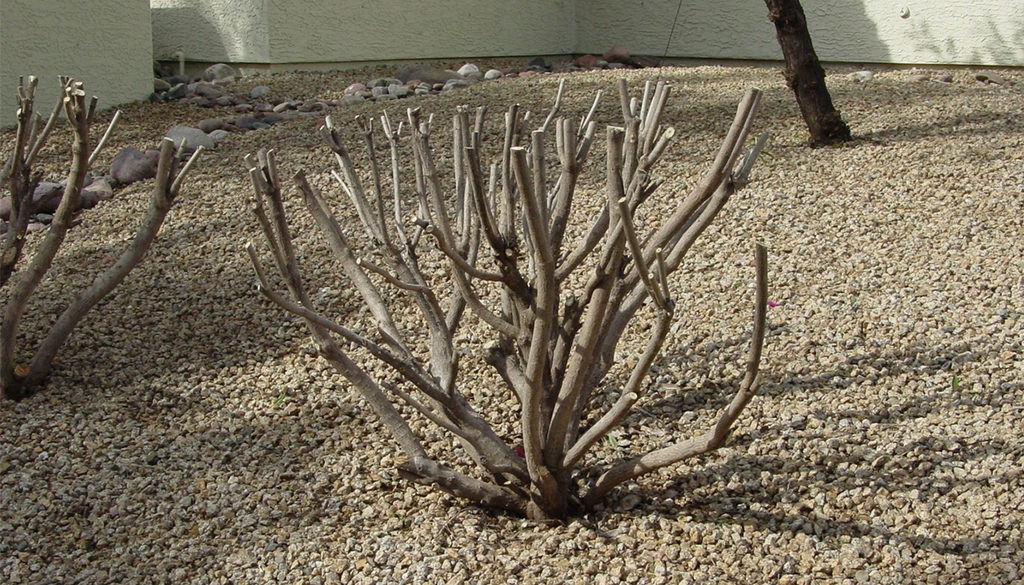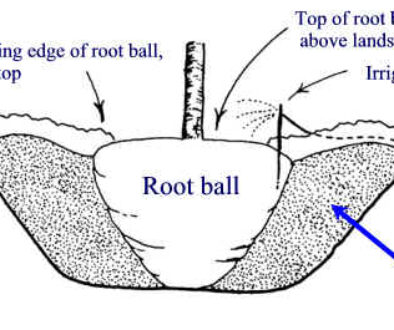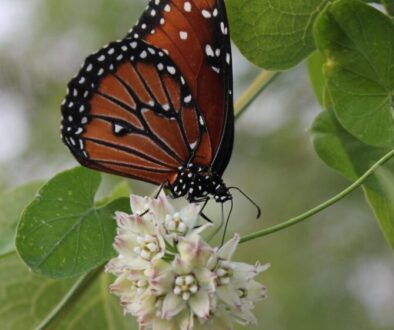What is Rejuvenation Pruning and Why is it Important in Phoenix?
The fragrant, beautiful flowering Bougainvillea bush makes a statement in many Phoenix landscapes. Vibrant green hedges are a defining feature, and grasses lend a textured, natural feel to properties. The growing never stops in Phoenix, so routine landscape maintenance often includes trimming plants to maintain their shape and general size.
But when plants are only lightly pruned throughout the year, you’re essentially removing new growth. By trimming every few weeks, plants’ leaves and flowers never reach their full potential. Instead, you get a “nice looking” flowering plant or “just fine” shrub. We have higher standards for the landscapes we maintain, and annual rejuvenation pruning is important for achieving lush, healthy plants.

We know it seems counter-intuitive to prune back up to a foot of growth, even removing most foliage. But the reality is, rejuvenation pruning is much better for plant health and appearance than continuously trimming back.
Here’s why rejuvenation pruning is beneficial for your Phoenix landscape if you want your plants to peak perform.
Rejuvenation pruning Rejuvenates and ‘Right-Sizes’ Plants
During a season of growth, plants tend to outgrow their assigned footprint in a landscape bed. Shrubs can encroach on walkways, hedges get too tall and leggy, branches can block views and even become a safety hazard. Basically, plants outgrow their potential. Rather than looking beautiful and thriving, they take on a bushy look.
Rejuvenation pruning encourages new growth and ensures a fuller plant.
For grasses, rejuvenation pruning removes dead blades that can infiltrate the plant and prevent new growth from receiving the air, sunlight, and nutrients needed to thrive. Grasses tend to not be self-cleaning, so pruning removes old material to make room for the new.
What rejuvenation pruning does that regular pruning does NOT is give the plant a completely fresh start. After rejuvenation pruning, foliage and flowers grow back in, and this healthy rejuvenation continues throughout the year. If you prune continuously (with no hard pruning), you’re constantly taking the new inches of fresh growth off of the plant. You’ll never get to appreciate the plant’s true beauty. When clients decide to heavy prune for the first time, they are always surprised at how amazing their landscapes look—lush, green, blooming, full yet appropriately sized for their space.
When To Rejuvenation Prune (And When to Avoid It)
Fall Rejuvenation pruning should be done once a year after the excessive temperatures subside (September through November). That way plants can go into their dormant season and can have the time to bounce back properly in the spring. They will rejuvenate quickly from the pruning and efficiently produce new growth.

That said, not all plants benefit from rejuvenation pruning, so it’s important to know the growth habits and whether the plant will tolerate a hard cut-back. A small variety of plants in Phoenix do not require rejuvenation pruning because they are self-cleaning plants, meaning dead material naturally sheds so the plant looks fresh without pruning. A professional with a deep understanding of tree and shrub care will be able to identify which plants should be heavy pruned.
Why Rejuvenation Prune In Phoenix?
In Phoenix where our landscaping season is year-round, rejuvenation pruning annually is important, so hedges, grasses, and flowering shrubs can look their best. Without annual rejuvenation pruning, plants get overgrown and block views. Hedges and grasses can take over landscape beds and look messy. Flowering shrubs will not produce as many blooms if they are constantly sheared vs. rejuvenation pruned once annually to stimulate healthy plant regrowth.
If you haven’t already, now is the time to schedule rejuvenation pruning so the task can be accomplished between September and November. Don’t wait until the landscape is overgrown. The service should be properly performed to avoid over-pruning, so it requires an experienced landscape maintenance professional with a horticultural background.
Let’s talk more about how you can maintain the investment in your landscape and improve its value. Call us any time at (602) 243-1106, or click here to fill out an inquiry form and we will get in touch with you.




